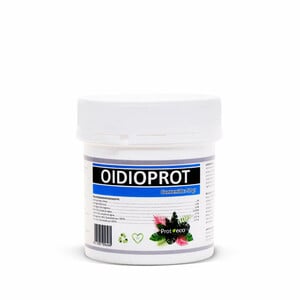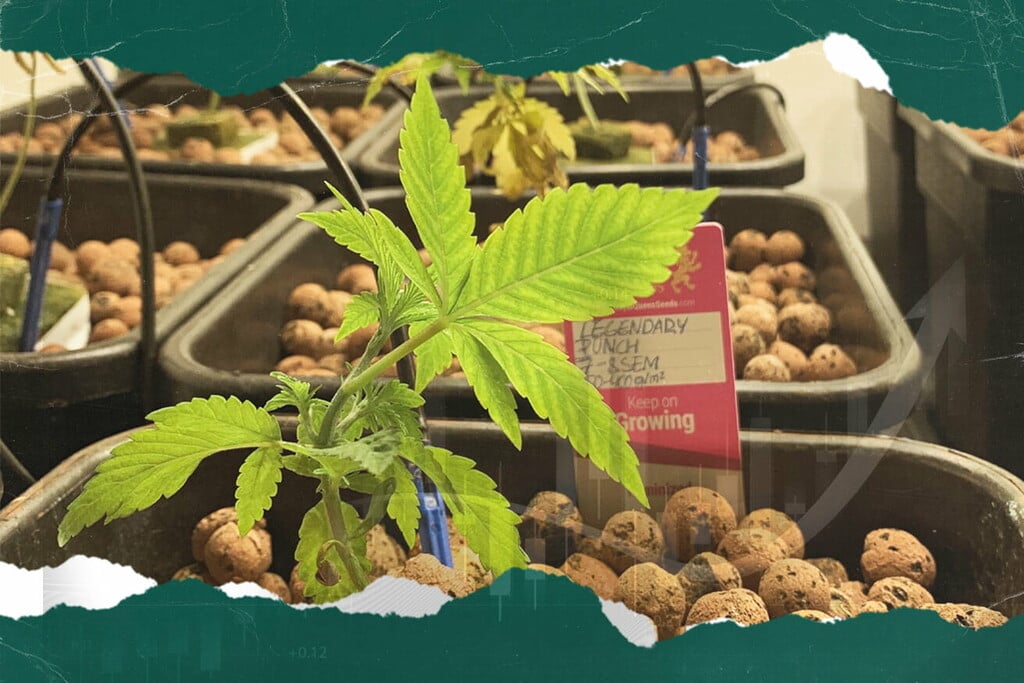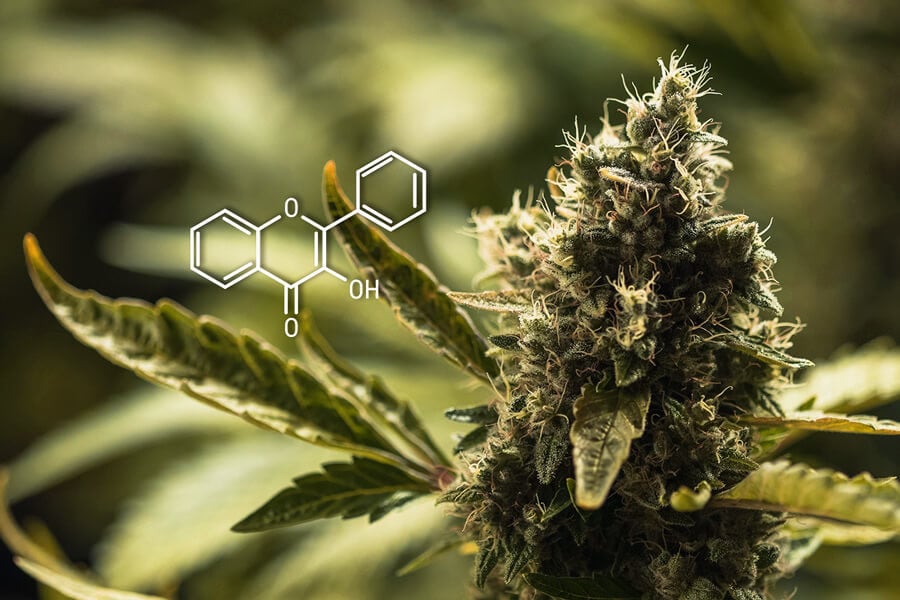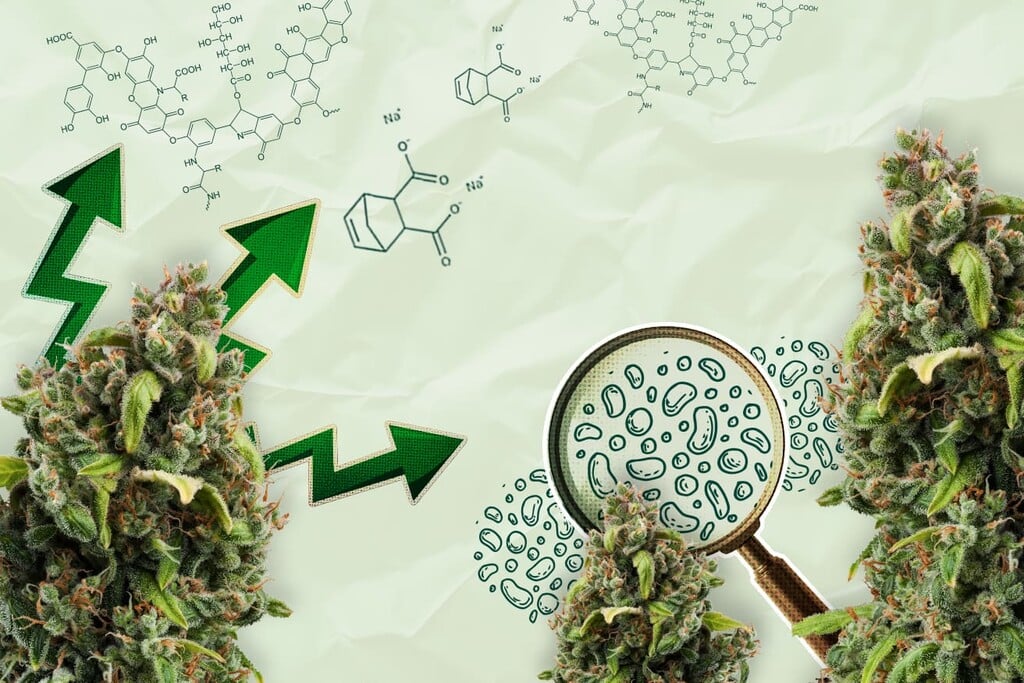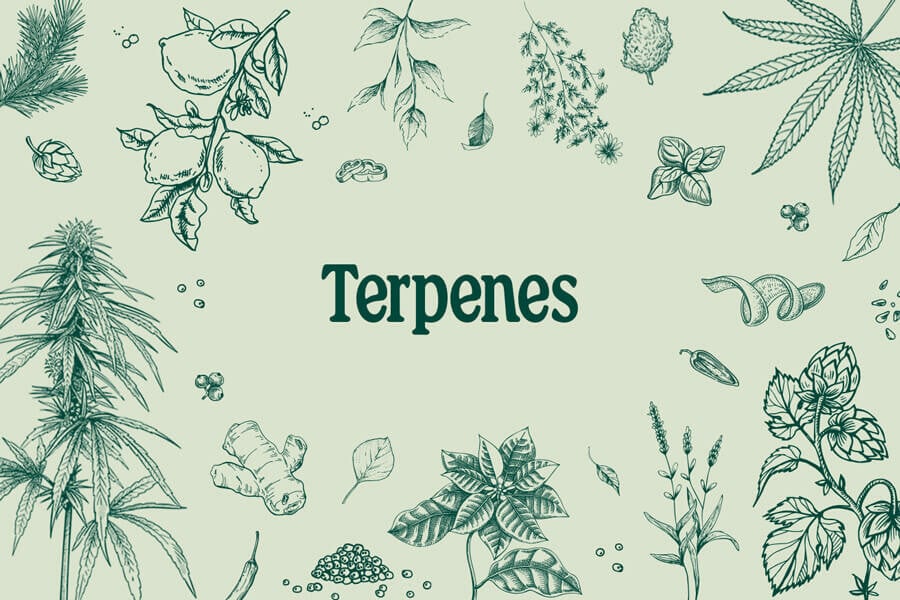.
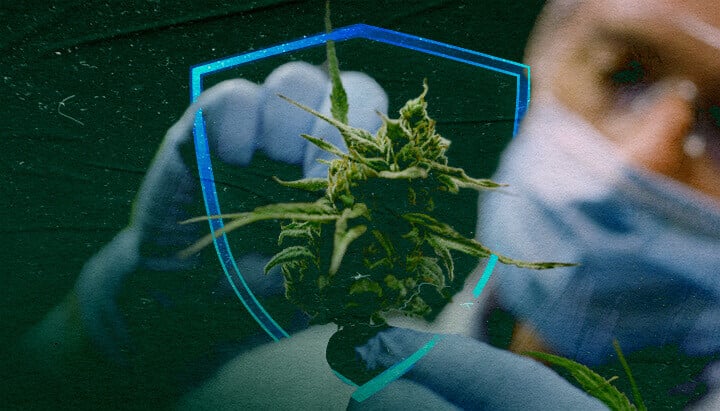
Cannabis Extracts: The Future of Organic Fungicides?
Could cannabis help fight crop disease? With synthetic fungicides under scrutiny, research reveals that terpenes and flavonoids offer natural, soil-friendly protection. This plant may revolutionise organic farming and home growing.
Contents:
In the near future, you might find yourself using cannabis to grow cannabis. Not merely in the form of mulch, or using hemp string as a trellis net, but as a chemical input designed to tackle pesky fungal diseases such as powdery mildew and Fusarium.
The terpenes, flavonoids, and other phytochemicals responsible for the effects and aromas of cannabis fulfil important functions outside of simply appealing to human cultivators. The product of adaptation, these molecules compose a chemical arsenal that defends weed plants against all manner of threats, including problematic fungi.
As some farmers turn away from conventional growing methods that have caused major damage to our environment, they’re looking to embrace more natural and soil-friendly approaches to nutrition, crop management, and plant pathogens.
Chemicals within cannabis could play a role in this transition, both in the context of agriculture as a whole and in niches such as organic cannabis cultivation.
Below, we’re looking into the distinct properties that make cannabis a promising candidate to combat harmful fungi!
The Need for Organic Fungicides

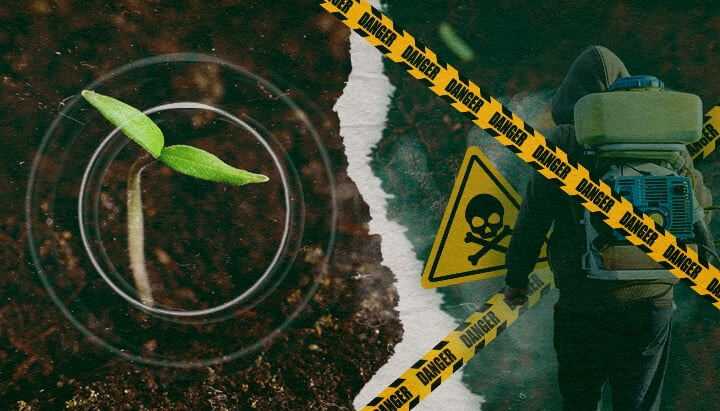
Something has gone wrong—very wrong. Contemporary technology has allowed us to produce more crops than ever before, so much so that around 40%[1] of the food we grow never gets eaten.
Excess tillage and the application of synthetic fertilisers, fungicides, and other inputs make this level of production possible in the current farming paradigm. Our agricultural soils are now polluted with microplastics, heavy metals, and chemicals including herbicides and fungicides.
As a response, the burgeoning fields of agroecology and sustainable farming are advocating for alternative approaches that seek to minimise these pollutants, such as the replacement of plastic tarps with cover crops. They’re also exploring different ways to combat fungi without noxious chemicals.
Timorex Gold, a natural extract from Melaleuca alternifolia (commonly known as tree tea) shows great promise as a natural fungicide. It’s demonstrated effectiveness against an array of plant-pathogenic species across vegetables, herbs, and fruit trees.
Similarly, in cannabis cultivation, organic fungicides have also proven their worth. Cannabis plants commonly fall prey to a range of fungal pathogens during flowering, including species belonging to the genera Aspergillus, Penicillium, Fusarium, and Mucor.
Research[2] published in 2023 shows that various organic fungicides have the ability to reduce powdery mildew in hemp by between 76–100%.
These findings are certainly promising. But why do synthetic fungicides pose so much of a problem? Why are alternatives required in agriculture overall?
Why Chemical Fungicides Are Losing Favour
Conventional fungicides, as their name suggests, are undeniably effective at killing fungi. However, just as medication designed for humans can carry certain undesirable side effects, chemical fungicides come with significant risks to the wider environment.
Check out the key reasons why natural alternatives are required:
- Scattershot mechanism: Many synthetic fungicides operate like chemical sledgehammers, killing off their target pathogen, along with beneficial fungi that help protect and nourish crops.
- Toxic residues: Certain fungicides linger in the soil, sometimes for up to an entire year. During this time, they harm non-target organisms and may enter the food chain.
- Soil degradation: In altering the delicate microbial communities in the soil, fungicides can sap the growing medium of its vitality and fertility. Damage to microbes that cycle nutrients not only impacts the soil microbiome but also the plants themselves.
- Resistance development: Just like bacteria can become resistant to antibiotics, fungi can adapt and build resilience to fungicides. Overuse of these chemical controls creates selective pressure that accelerates this process, creating hardier fungal strains that are harder to control.
- Water pollution: Fungicides can enter nearby waterways as runoff from fields. This takes a heavy toll on aquatic ecosystems that are already under considerable pressure from other sources of pollution.
How Cannabis Extracts Work as Fungicides


Believe it or not, your favourite herb could contribute to a new arsenal of plant-derived fungicides that carry considerably less risk than their synthetic alternatives. But how exactly do cannabis extracts work as organic fungicides?
Cannabis plants are phytochemical powerhouses. They possess unique biosynthetic pathways that enable them to produce hundreds of different chemicals. Some of these, as it happens, help to protect the plants against fungal pathogens that they encounter both in the wild and cultivated settings.
From terpenes and cannabinoids to flavonoids, weed plants invest energy in protecting themselves, helping ensure they produce mature flowers for reproduction.
Continue reading to get acquainted with these fascinating molecules.
Key Antifungal Components of Cannabis Extracts
Cannabis plants forge several key categories of chemical weaponry. These include:
- Flavonoids: Cannabis plants produce a range of flavonoids, including those found widely in nature, such as quercetin and kaempferol, as well as those exclusive to weed—e.g. cannflavins. These flavonoids show promise in inhibiting fungal growth[3], particularly through plasma membrane disruption and the induction of mitochondrial dysfunction in fungal cells.
- Terpenes: Cannabis plants produce over 140 terpenes—compounds that contribute to the unique aromas, flavours, and effects of each strain. Past their pleasant smells, terpenes are secondary metabolites partially designed to defend plants against disease. Owing to their terpene content, cannabis resin extracts offer promising antifungal action.
- Alcohols: Extracts from cannabis leaves have proven effective[4] against several plant fungal pathogens, such as Aspergillus flavipes. Various compounds are responsible for this action, including alcohols such as n-butanol.
Benefits of Cannabis-Based Fungicides Over Traditional Methods
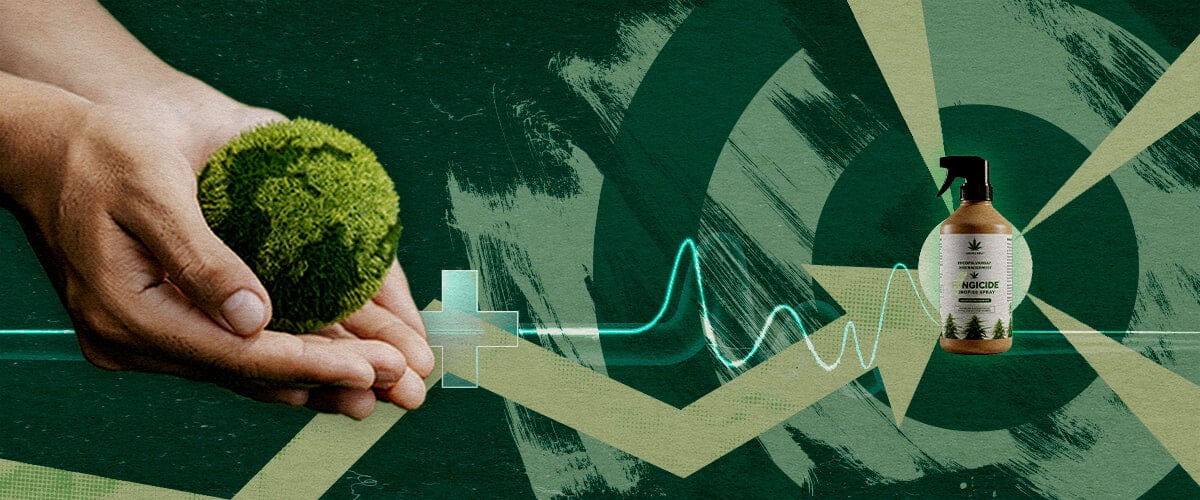

If cannabis-derived compounds can match or even exceed the effectiveness of conventional fungicides, while also reducing environmental and health risks, they could represent a major breakthrough in sustainable agriculture.
Unlike many chemical fungicides that are non-selective, cannabis-based extracts could offer targeted activity against harmful fungi, meaning they may help suppress pathogenic microbes without disturbing beneficial soil organisms.
This makes them especially appealing to organic farmers and regenerative growers seeking to maintain a healthy, living soil microbiome.
When used over a long period of time in high concentrations, they may disrupt beneficial fungal populations in the soil. However, agroecology vouches for a balanced approach.
When paired with other fungal mitigation techniques like polycropping, cannabis fungicides can offer a short-term and targeted solution as part of a broader holistic organic strategy.
Comparing Cannabis Extracts to Traditional Fungicides
Some of the key advantages that could make cannabis extracts more favourable to traditional fungicides include:
- Eco-friendly profile: Cannabis-derived fungicides are biodegradable and don’t remain in the environment in the way synthetic chemicals do. This means less pollution, less soil disruption, and reduced harm to non-target organisms.
- Targeted action: While still potent, many cannabis compounds are less likely to harm beneficial soil fungi and microbes when used sparingly and intentionally.
- Lower resistance risk: Thanks to the complexity and diversity of compounds in cannabis, pathogens are less likely to quickly develop resistance—especially if extracts are rotated or blended for varied effects.
- Consumer safety: Organic and cannabis-specific growers aim to avoid synthetic residues on their crops. Cannabis-based fungicides are a natural fit for this purpose, with far fewer risks to end users.
Challenges and Limitations of Cannabis-Based Fungicides
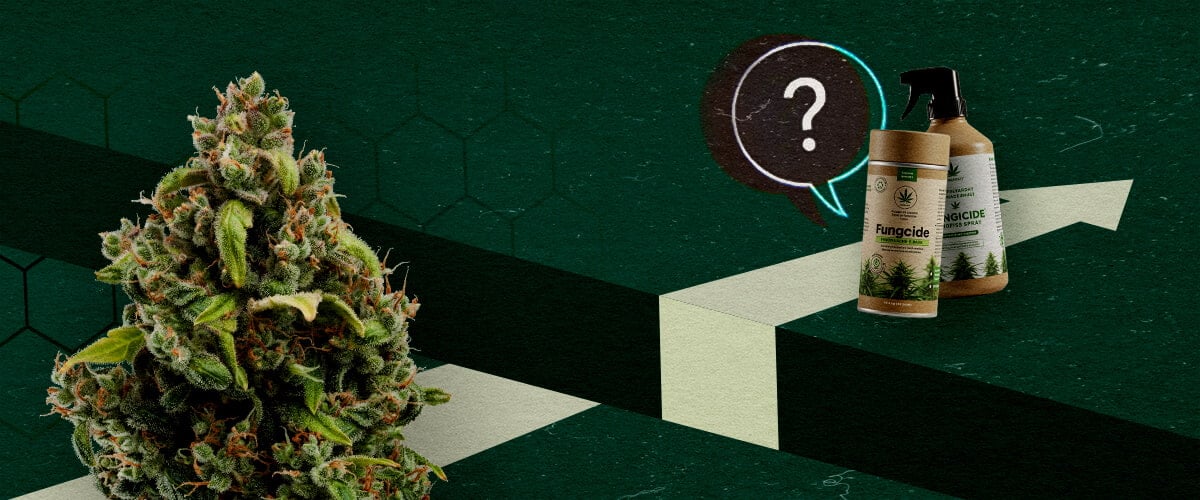
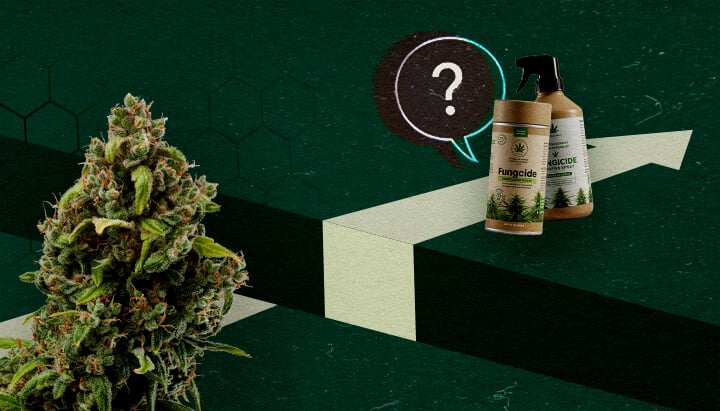
Innovation is often accompanied by numerous hurdles. Despite their potential, cannabis-derived fungicides are still novel, under-studied, and could face several challenges to adoption.
Addressing the Legal Landscape
Regulation remains one of the largest obstacles to widespread adoption. In many parts of the world, cannabis is still classified as a controlled substance—even in agricultural contexts. This limits both the study and commercial development of cannabis-based agricultural inputs.
Moreover, differentiating between hemp-derived products (which contain low amounts of THC) and high-THC cannabis products creates an additional legal grey area. While hemp extracts may be easier to commercialise, they often contain lower concentrations of potent antifungal compounds like certain cannabinoids and terpenes.
Future Outlook: Can Cannabis Extracts Become Mainstream Organic Fungicides?
Using cannabis as a fungicide offers a potential alternative to harmful conventional options—not just to weed growers, but to farmers in general. These cannabis-based fungicides pose fewer risks to users and the environment alike.
With tweaking and testing, tailored formulas could also target specific pathogens without triggering resistance, all the while preserving the delicate beneficial fungal life in the soil.
Things remain extremely early in this area of innovation. Further research is required to fully understand the chemical complexities, and how the many compounds found in cannabis affect both pathogens and other microbial life in the soil. However, in time, you could indeed find yourself growing weed with the help of weed.
- https://www.wri.org/insights/how-much-food-does-the-world-waste
- https://apsjournals.apsnet.org/doi/10.1094/PDIS-09-22-2094-RE
- https://pmc.ncbi.nlm.nih.gov/articles/PMC7168129/
- https://www.researchgate.net/publication/347510022_Antifungal_activity_of_leaf_extract_of_Cannabis_sativa_against_Aspergillus_flavipes


























